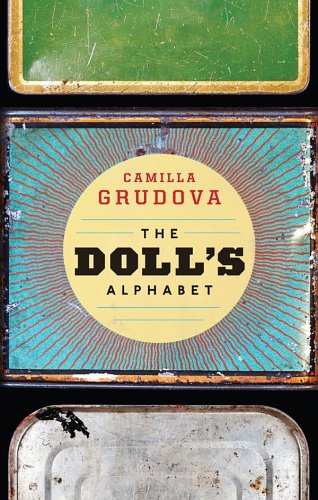
The Doll's Alphabet
فرمت کتاب
ebook
تاریخ انتشار
2017
نویسنده
Camilla Grudovaناشر
Coffee House Pressشابک
9781566894999
- اطلاعات
- نقد و بررسی
- دیدگاه کاربران
نقد و بررسی

August 28, 2017
Women become wolves, men are born spiders, Gothic ornaments conquer an apartment building, and corpses complain in Grudova’s smart, haunting debut collection. Set in worlds that overlap with ours—characters listen to Tchaikovsky, watch Pinocchio, and travel to Europe—these stories nevertheless render familiar tropes deeply strange. In the dystopia of “Rhinoceros,” trains don’t run, food is scarce, but a young couple survives by selling drawings of animals they’ve never seen to a mysterious man in a gray top hat. The society of “Waxy” sanctions an extreme form of couplehood: women must support their men by working in hazardous factories, where they are often maimed, while men study for exams and visit cafés. Many objects and images recur throughout the collection: women remove their skin to reveal their “true” bodies, which resemble sewing machines, in “Unstitching,” and an eight-legged dandy falls in love with a sewing machine in “Notes from a Spider,” hiring seamstresses to keep the machine running at any cost, even their own lives. A kidnapped mermaid skulks around the house in “The Mermaid,” while a ship’s wooden mermaid figurehead gives birth to a little cherub statue in “The Sad Tale of the Sconce.” A canny collage artist with an eye for the comically macabre, Grudova scavenges her images from Victorian and Edwardian aesthetics. Against this background, her ironies and insights about the inequalities in relationships between men and women feel startlingly current.

October 1, 2017
DEBUT The three-page opening story sets the surreal feminist tone of Grudova's first collection. Greta learns to "unstitch" herself, and when other women see her, they can't help but shed their physical forms as well. In "Waxy," set in a world similar to Margaret Atwood's A Handmaid's Tale, women go to school to learn to take care of men. The unnamed narrator works in a factory painting sewing machines and is happy to meet a beautiful man despite his lack of "papers" and tendency to wet himself. "Rhinoceros" describes a couple's struggle to survive on the money and useless foodstuffs, such as flour or overripe grapes, that Nicholas earns drawing sea monkeys, tins, and other objects they find. Many stories feature childbirth, although the babies are deformed or "pink lumps" and unrecognizable humans. Grudova succinctly details the lives of women as they try to cope with fantastic yet uncannily familiar realities. VERDICT Some readers may be put off by the bizarre, sometimes grotesque imagery in these stories. Others, such as fans of authors Alexandra Kleeman and Amelia Gray or the films of David Lynch and David Cronenberg, will be delighted. Grudova is undeniably talented and someone to watch.--Kate Gray, Boston P.L., MA
Copyright 2017 Library Journal, LLC Used with permission.

August 15, 2017
Short stories that combine steampunk imagery with absurdist fantasy to explore gender roles.In her debut collection, Grudova borrows whirling gears from steampunk fantasy and clicking carapaces from horror, but these slender stories lack the robust plot conventions of the more popular genres they draw from, belonging instead in the genre of literary fiction. The stories' principal emotion is melancholy disgust, often tinged with longing and dread. Grudova name-checks Hans Christian Andersen, Isak Dinesen, and Ovid; her characters metamorphose into wolves, insects, machines. "I feel part wrought iron, part human and, I won't lie, part vermin," says the narrator of "Notes from a Spider," but that could be a line from almost any of these stories. In the opening story, "Unstitching," first one woman and then another finds a way to "unstitch" herself, letting her clothes, skin, and hair fall away: "She did not so much resemble a sewing machine as she was the ideal form on which a sewing machine was based. The closest thing she resembled in nature was an ant." The men who try to do the same, however, end up "wounded and disappointed. They had no 'true, secret' selves inside, only what was taught and known." The most successful of the stories are the ones that most explicitly address gender roles and women's sexual and reproductive autonomy. In "Waxy," women work in factories to support their Men, who go to school (forbidden to women) and study for Exams; to avoid the expense of contraception or raising children, many Men prefer to have sex with girls who have not yet begun to menstruate. In "The Moth Emporium," the narrator looks at her husband differently after he allows an artist to install sculptures depicting a rape and murder in their home, which is also a costume shop. The effect of the absurd, unnatural, cruel, and unfair social rules in these stories is to cast light on how absurd, unnatural, cruel, and unfair the rules of contemporary society can be.
COPYRIGHT(2017) Kirkus Reviews, ALL RIGHTS RESERVED.




دیدگاه کاربران